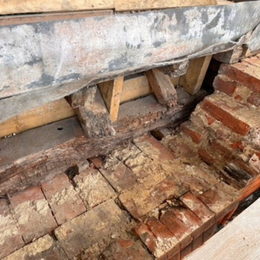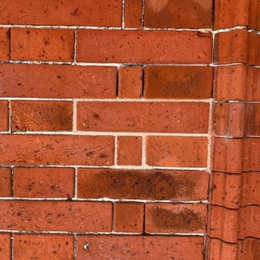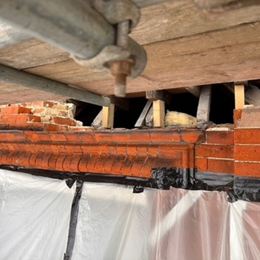News from the Parapet: April 2025
News from the ParapetThe façade has now been carefully dismantled to just above the second-floor window openings in preparation for the replacement of gauged brick cornice and parapet.
During dismantling work, original cornice bricks and some of the parapet wall bricks were retained. The bricks will not be reused in the new parapet wall and cornice but will instead be used to create templates so that new gauged brickwork accurately replicates the original.
Deconstructing the parapet wall and cornice confirmed that both these elements were ‘super saturated’ with water. This has been caused by moisture slowly making its way through the fine cracks in the cement mortar used in the wall’s construction over 100 years ago. Cement mortars are very harmful for historic buildings due to its dense structure, meaning that water struggles to evaporate, leading to damage in the surrounding areas.
Unlike cement, the original and new lime mortars, gauged brickwork and traditional facing bricks are highly vapour permeable. This means that these walls will dry out quickly via wind, sun and water evaporation.
Image gallery
Whilst the cornice was dismantled, evidence was found of an early, possibly original red colour wash applied over the entire façade to conceal the gauged brickwork and mortar joints. This would have created a uniform red colour with no mortar joints visible. The colour wash probably wasn’t removed, it simply eroded with weathering. There are no plans to restore the colour washed façade.
Close examination has confirmed both east elevation chimneys are in poor condition and must be rebuilt. Both chimneys and the east elevation parapet wall have been repointed and partially rebuilt in cement mortar. The cement mortar and concrete capping have increased decay because of their low water vapour permeability (the same problem as the parapet wall).


